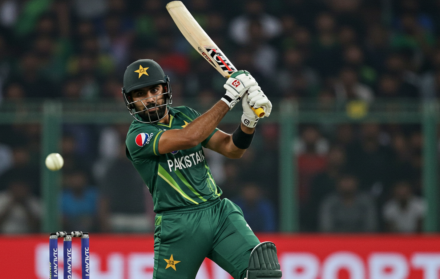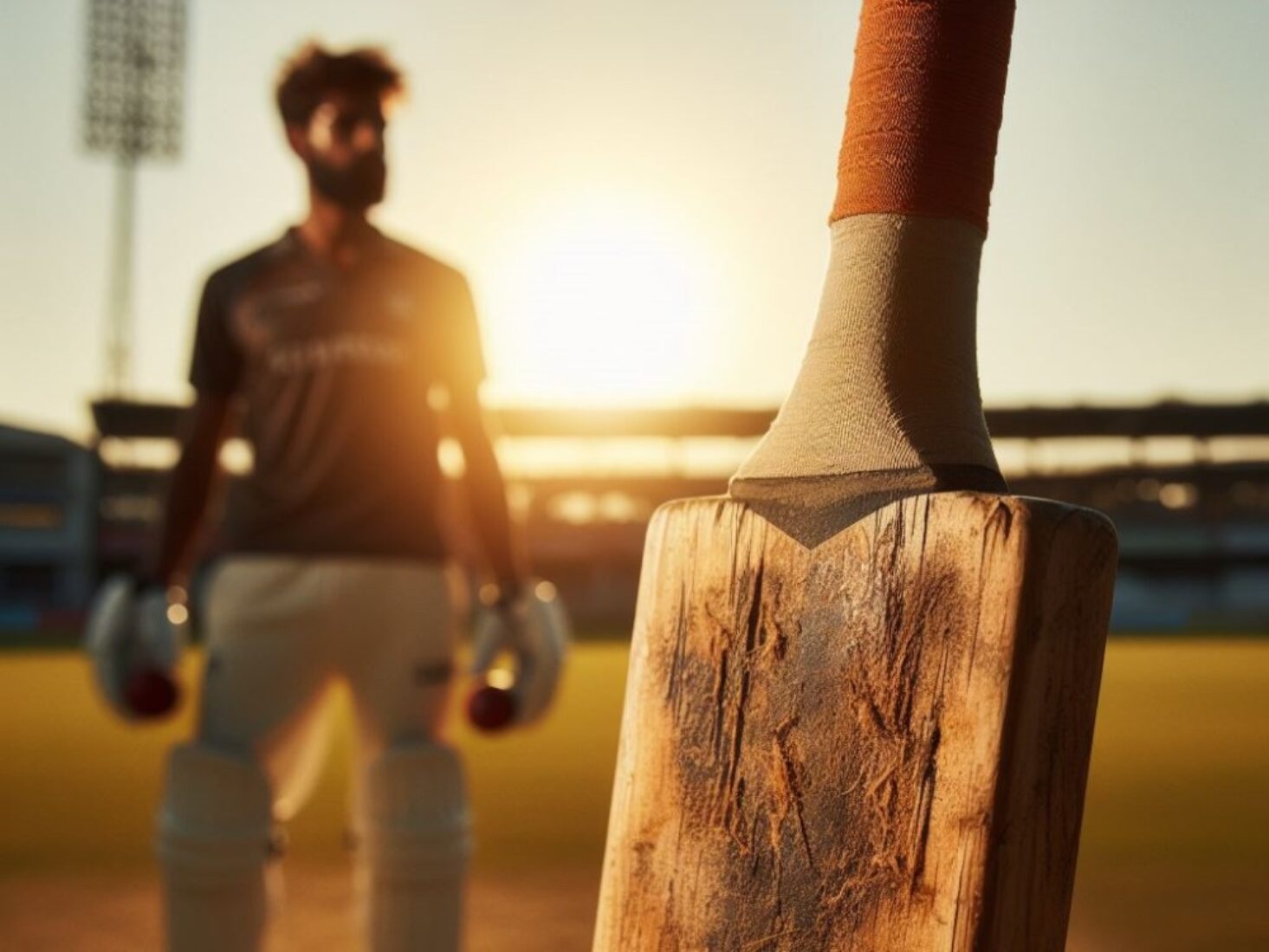
The Impact of Weather on Cricket Equipment: What You Need to Know
The game of cricket is highly impacted by weather conditions, and this includes its effect on the equipment used in the sport. Understanding how different weather conditions can affect cricket gear is crucial for players, coaches, and cricket enthusiasts.
This comprehensive guide will provide insights into the impact of weather on cricket equipment, covering topics such as the effect of rain, heat, humidity, wind, and cold weather on various cricket accessories.
It will discuss the importance of proper storage, the impact of weather conditions on cricket matches, maintenance best practices, and what to do if your gear gets damaged by weather. It will provide tips on preparing for different weather conditions in cricket and selecting suitable equipment.
It will address common questions regarding cricket gear types, durability in different weather conditions, ideal gear for wet conditions, the impact of humidity on bat grip, and storing accessories in extreme temperatures.
Whether you are a player or a fan, understanding the impact of weather on cricket equipment is essential for optimal performance and longevity of your gear.
The Effect of Rain on Cricket Equipment
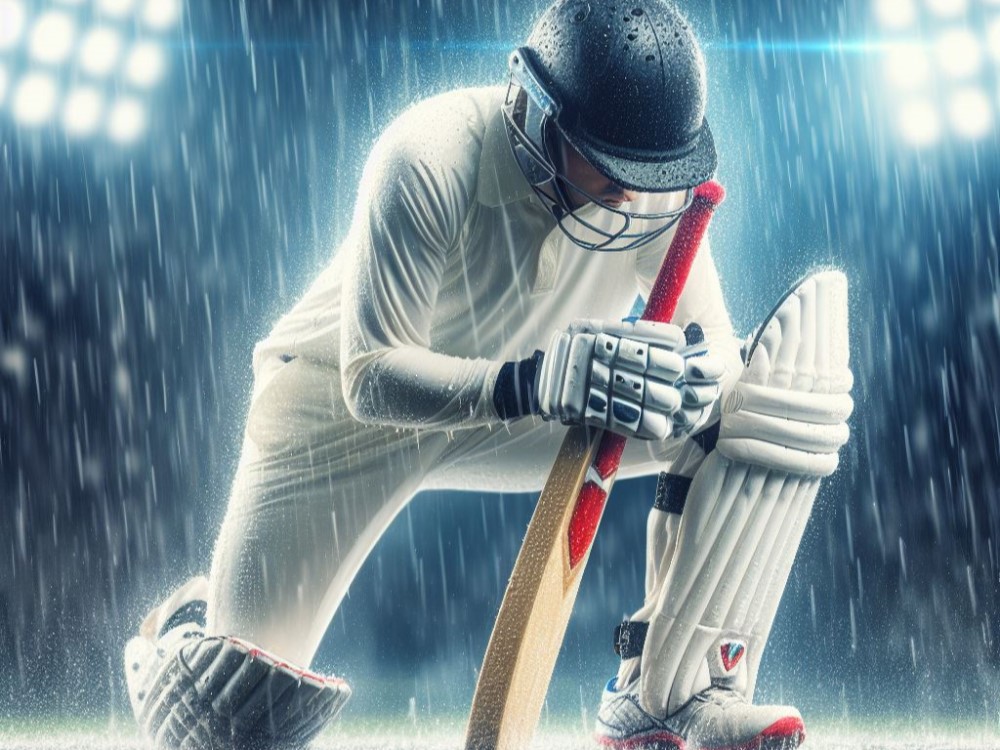
Rain has a significant impact on cricket equipment. There are several important factors to consider:
1. Ball maintenance: Rain can saturate and alter the shape of the cricket ball, affecting the bowlers’ ability to achieve the desired swing or spin. It also affects the ball’s speed and trajectory.
2. Pitch condition: Wet and soft pitches provide less grip and turn for spinners. They also slow down the overall pace and bounce of the game.
3. Bat handle: Moisture from the rain can make the bat handle slippery, affecting the batsman’s grip and control. This can result in mistimed shots or even the loss of the bat.
4. Protective gear: Rain makes padding and protective gear heavier and uncomfortable. Wet gloves may lose their grip, making it difficult for fielders to catch the ball.
5. Fielding conditions: Wet weather makes the playing surface slippery and muddy, challenging fielders in terms of quick movement and balance. This affects their ability to stop the ball or take catches.
To minimise the effects of rain on cricket equipment, proper maintenance procedures are essential. This includes thorough drying after exposure to rain, using grip enhancers on bat handles, and wearing waterproof gear.
Regular inspection and replacement of damaged or waterlogged equipment ensures optimal performance and safety. By taking these precautions, players can mitigate the negative effects of rain on their cricket equipment and continue to perform at their best.
How Heat Affects Cricket Equipment
Heat has a significant impact on cricket equipment, affecting its performance and durability. Here are the main ways in which heat affects cricket equipment:
1. Cricket bats: Heat can cause cricket bats to dry out and become brittle, increasing the risk of cracks or breakages. It is important to store bats in cooler environments to preserve their quality.
2. Cricket balls: Heat can affect the hardness and shape of cricket balls. Hot weather causes the leather to expand, resulting in a softer ball. This affects the bounce and swing, making it more difficult to control.
3. Cricket gloves: High temperatures can cause sweat and moisture to build up in cricket gloves, leading to discomfort, reduced grip, and potential deterioration over time. It is advisable to properly air out gloves after each use.
4. Cricket clothing: Excessive heat can cause discomfort and reduce performance for players wearing heavy or non-breathable clothing. It is recommended to wear lightweight and moisture-wicking fabrics for better ventilation.
5. Cricket footwear: Heat can affect the adhesives and materials in cricket shoes, leading to sole detachment or decreased grip. It is recommended to choose footwear made with heat-resistant materials and maintain them properly.
6. Cricket accessories: Heat can impact the padding of helmets, leg guards, and arm guards. Excessive heat makes these items less comfortable and less effective in providing protection.
To prevent or minimise the negative effects, it is important to store and maintain equipment properly, keeping them away from direct sunlight and extreme temperatures, and regularly inspecting them for any signs of damage or deterioration.
The Impact of Humidity on Cricket Bats and Balls
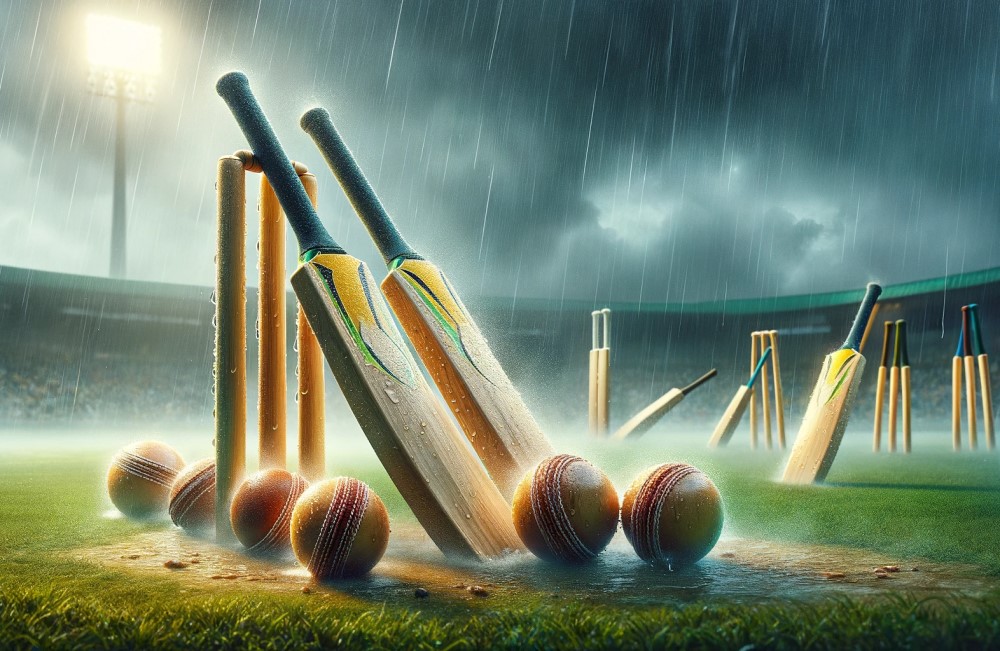
Humidity has a significant impact on cricket bats and balls. It can make the bat heavier and disrupt its balance, affecting shot timing and power. Excess moisture can also cause the wood to expand, leading to cracks or warping. Bats should be stored in a dry location and inspected regularly for any damage.
In humid conditions, cricket balls become softer and lose their shine, undermining swing and seam movement. Bowlers find it difficult to control and vary their deliveries. Teams should closely monitor the condition of the ball during matches played in high humidity. Regularly drying and polishing the ball can help reduce the negative effects.
Proper maintenance is essential to minimize the impact of humidity. Bats should be stored in a dry place at moderate temperatures and protected with covers. Balls should be dried and polished regularly to ensure optimal performance and durability. Understanding the impact of humidity helps players and teams make informed decisions and take necessary precautions for the longevity of their equipment.
Wind and its Influence on Cricket Equipment
Wind significantly influences cricket equipment. Here are important factors regarding wind and its impact on cricket equipment:
- Ball swing: The direction and speed of the wind can significantly affect the swing of the cricket ball. Bowlers and captains must carefully analyze the wind conditions to determine their swing strategies.
- Fielding: Wind poses a challenge for fielding. It alters the trajectory of the ball, making it more difficult for fielders to judge and catch. Strong gusts can also affect throws, leading to missed targets.
- Batting: Batsmen must take into account the direction of the wind when playing shots. Tailwinds can help the ball travel further, while headwinds limit its distance. Adjusting shot selection and power is crucial for optimal batting performance.
- Spin bowling: Wind plays a role in spin bowling as well. Crosswinds make it challenging for spinners to control the flight and trajectory of the ball. Spinners must adapt their tactics and variations based on the wind conditions.
- Pitch conditions: The wind has an impact on the playing surface. It can dry out the pitch, making it difficult for bowlers to generate movement. Strong winds can blow debris onto the pitch, resulting in unevenness and unpredictable bounce.
Fact: In a 2003 test match between England and South Africa, strong winds favoring fast bowlers caused exciting ball movements in the air throughout the game.
How Cold Weather Affects Cricket Accessories

Cricket accessories are vital for players’ performance. Cold weather can have an impact on these accessories and influence the game. Here are some important points to consider:
1. Cricket balls: In cold weather, cricket balls become harder and less responsive. This can make it challenging for bowlers to generate swing or spin, and for batsmen to judge the movement of the ball. The reduced bounce and increased hardness can also result in more bruises and hand injuries.
2. Cricket bats: Cold weather can make cricket bats stiffer and less flexible. This affects the performance of the bat, making it more difficult to generate power and control while playing shots. It is important to keep the bat covered and protect it from extreme cold temperatures.
3. Protective gear: Cold weather can affect the effectiveness of protective gear such as helmets and gloves. In freezing temperatures, helmet padding may become less effective in absorbing impact, and gloves may become stiffer and affect the grip. Players should choose protective gear suitable for cold weather conditions.
4. Footwear: Cold weather can make the field slippery and affect the grip of cricket shoes. Players should select footwear with good traction to minimize the risk of slips and falls.
Pro-tip: To maintain the performance of cricket accessories in cold weather, store them in a dry and temperature-controlled environment when not in use. Warm up the accessories by keeping them indoors before playing. This will help preserve their durability and performance.
What Happens to Cricket Equipment in Snow?
Cricket equipment is specifically designed for outdoor use. What happens to cricket equipment in snow? Here are important factors to consider for cricket equipment in snowy weather:
1. Bats: When exposed to snow, cricket bats can suffer damage due to the expansion and distortion of the wood. This can result in a decrease in performance and durability. Therefore, it is crucial to keep bats dry and protected from snow exposure.
2. Balls: Snow can turn cricket balls heavy and damp, thus impacting their bounce and trajectory. The moisture can harm the leather. To prevent damage, it is advisable to avoid using cricket balls in snowy conditions.
3. Gloves and Pads: Snow can make gloves and pads wet, compromising their effectiveness in providing protection and grip. Wet gloves may not securely hold the bat, while wet pads can become heavy and uncomfortable. Therefore, it is essential to keep these items dry and thoroughly dry them after exposure to snow.
4. Clothing: In snowy conditions, it is important to wear suitable protective clothing, including thermal layers, waterproof jackets, and trousers. This ensures that players stay warm and dry, ultimately allowing them to perform at their best.
To maintain the longevity and functionality of cricket equipment, it is best to avoid exposing it to snow whenever possible. When not in use, store the equipment in a dry and moderate environment. Regularly inspect and maintain the equipment to promptly address any issues that may arise.
By following these measures, players can preserve the quality of their cricket equipment and enjoy the game even in snowy conditions. Stay prepared and take care of your gear to enhance your cricketing experience.
The Importance of Proper Storage for Cricket Gear
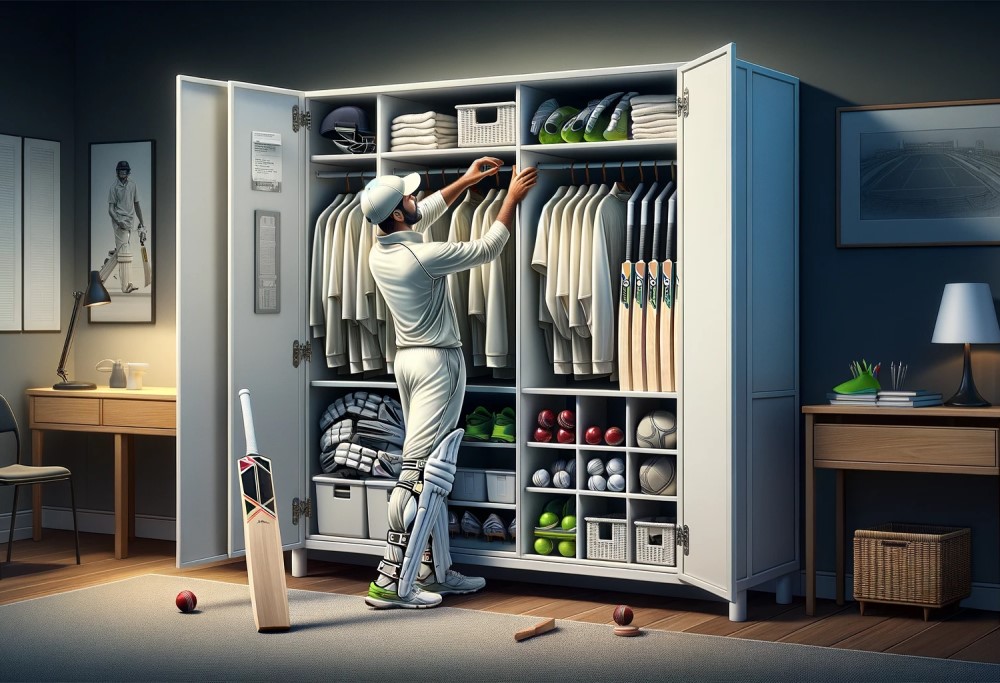
Proper storage is crucial when it comes to maintaining the durability and functionality of cricket equipment. The importance of proper storage for cricket gear cannot be emphasized enough. By storing your equipment in a clean and dry area, free from dust, moisture, and pests, you ensure its protection and prolong its lifespan. It is essential to have designated storage areas to stay organized and easily locate your gear during practice sessions or matches.
Practicing proper hygiene by regularly cleaning, drying, and disinfecting your equipment before storing it reduces the risk of infections and helps maintain its quality.
Safety is also a key factor – securely and stably storing equipment such as bats, balls, and helmets ensures the safety of players and others.
By implementing a well-maintained storage system, you can increase the longevity of your gear, ultimately saving money in the long run and allowing for optimal performance. Regularly inspecting and cleaning your equipment, investing in storage solutions, and educating team members on proper storage practices are essential to uphold the significance of proper storage.
By prioritizing proper storage, you guarantee that your gear is always prepared for a successful performance on the cricket pitch.
How Weather Conditions Impact Cricket Matches
Weather conditions play a crucial role in the outcome of cricket matches, affecting the game in various ways. The following are some key ways in which weather impacts the sport:
- The presence of rain leads to a wet playing surface, which hampers the bounce of the ball. This may result in matches being delayed or even abandoned.
- Strong winds have an influence on the flight of the ball, making it challenging for bowlers to control their deliveries. Conversely, batsmen may find it easier to strike the ball with the assistance of a tailwind.
- Extreme temperatures also have an impact on player performance. High temperatures can lead to fatigue and dehydration, affecting stamina and concentration. On the other hand, cold temperatures make the ball harder and can influence its movement.
- Humidity is another factor that affects the behavior of the cricket ball. In moist conditions, bowlers find it difficult to achieve swing or spin, thus leveling the playing field.
- Overcast conditions tend to favor the bowlers as the ball is more likely to swing or seam. Batsmen may struggle to anticipate the movement, resulting in more dismissals.
Understanding the influence of weather on cricket matches is crucial for players, coaches, and officials alike. This knowledge helps them make informed decisions regarding tactics, team selection, and pitch preparation. Adapting to the prevailing weather conditions gives teams a competitive advantage and enhances their chances of success.
What Are the Best Practices for Maintaining Cricket Equipment?

When it comes to maintaining cricket equipment, it is advisable to follow these best practices for longevity and optimum performance. After each use, it is important to clean your equipment by using a soft cloth or brush to remove any dirt, grass, or moisture. Proper storage of cricket equipment is essential. It should be kept in a cool and dry place to prevent any damage caused by moisture or extreme temperatures. Direct sunlight should be avoided.
Regularly inspect your equipment for any signs of damage, particularly on batting gloves, pads, and helmets. It is important to replace any damaged equipment to ensure safety. It is recommended to follow the manufacturer’s guidelines for maintenance. Different equipment may have specific instructions that should be adhered to in order to extend its lifespan.
It is crucial to keep your equipment dry. Use a dry cloth to wipe down your cricket bat after use to remove sweat or moisture. Avoid damp areas to prevent the growth of mould or mildew. By implementing these practices, you will be able to prolong the lifespan of your cricket equipment and maintain its optimal performance. Proper care also helps in saving money by reducing the need for frequent replacements.
What to Do If Your Cricket Gear Gets Damaged by Weather?
If your cricket gear gets damaged by the weather, here is what to do:
1. Assess the damage: Carefully examine your gear to identify the affected areas.
2. Allow the equipment to dry: Let your gear dry naturally in a well-ventilated area. Avoid using direct heat sources like hairdryers, as they can cause further damage.
3. Clean the gear: Use a mild detergent and water to remove dirt or mud. Gently scrub with a soft brush or cloth, then rinse thoroughly with clean water.
4. Repair minor damages: For loose stitches or small tears, try fixing them yourself using a needle and thread. Ensure the repairs are secure to maintain the integrity of the gear.
5. Seek professional assistance: Consult a professional cricket gear repair service for significant damages or repairs that require expertise. They have the knowledge and tools for proper repairs.
6. Store the gear correctly: When not in use, store your cricket gear in a dry and cool place. Use protective covers or bags to shield it from dust, moisture, and sunlight.
7. Regular maintenance: Keep your gear in good condition by regularly inspecting and cleaning it. This will help identify potential damages early on and prolong the lifespan of the equipment.
Remember, taking immediate action and properly maintaining your cricket gear will extend its lifespan and ensure that you are always prepared for a game, regardless of the weather.
How to Prepare for Different Weather Conditions in Cricket?

To prepare for different weather conditions in cricket, follow these steps:
- Keep an eye on the weather forecast: Prior to any match or practice session, check the forecast to be aware of the expected weather conditions.
- Dress appropriately: In hot and sunny weather, wear lightweight and breathable clothing that offers UV protection. In cold and wet weather, layer up and wear waterproof clothing.
- Ensure proper grip and footwear: Use footwear with good traction to avoid slipping on wet ground. Secure your bat grip and use grips specifically designed for wet conditions.
- Adapt to pitch conditions: Dry conditions make the pitch harder and faster, while wet conditions slow it down. Adjust your gameplay accordingly.
- Manage the ball: In wet conditions, the ball may become heavy and difficult to swing or spin. Monitor its condition and adapt your bowling strategy. Use techniques to dry the ball if necessary.
What Are Some Tips for Selecting Cricket Equipment Suitable for Various Weather Conditions?
When it comes to choosing cricket equipment suitable for various weather conditions, it’s important to keep in mind a few tips.
1. Cricket bat: Depending on the weather, you need to consider the moisture content of the bat. In hot and dry weather, it’s recommended to opt for a bat with low moisture content to prevent drying out and cracking. Conversely, in wet weather, a bat with higher moisture content will provide durability and prevent softening.
2. Batting gloves: To keep your hands cool in hot weather and prevent excessive sweating, choose gloves that are breathable and have ventilation features. Gloves with good grip and moisture-wicking properties will improve control and prevent the bat from slipping in wet conditions.
3. Helmet: When it’s sunny and hot, it’s advisable to select a helmet with a wide brim or visor to provide extra sun protection for your face and eyes. On the other hand, in wet weather, make sure the helmet has a reliable face guard and non-slip padding to ensure visibility and stability.
4. Footwear: Depending on the weather conditions, your cricket shoes should have specific features. In dry and hot weather, opt for shoes made with breathable materials and good sweat-wicking properties to keep your feet cool and dry. In wet conditions, shoes with excellent grip and water-resistant features are essential to provide traction and prevent slipping.
5. Clothing: Choose lightweight and breathable fabrics, such as moisture-wicking polyester, to stay cool and comfortable in hot weather. On the other hand, in wet conditions, it’s crucial to go for waterproof and quick-drying clothing to stay dry and maintain an optimal body temperature.
6. Protective gear: Regardless of the weather, always ensure that you wear suitable protection such as pads, gloves, and abdominal guards. Select durable materials that offer sufficient impact resistance to maximize safety.
By following these guidelines and selecting the appropriate cricket equipment for different weather conditions, players can enhance their performance, comfort, and safety on the field.
What Are the Different Types of Cricket Equipment?

- Bat: The primary tool used by the batsman to strike the ball. It is constructed from willow and comprises of a handle and a blade.
- Ball: Manufactured from leather, used by the bowler to dismiss the batsman. It is typically red or white, depending on the game format.
- Stumps: Three wooden poles inserted into the ground, with two bails positioned on top. They define the boundaries of the batting crease.
- Pads: Leg guards worn by the batsman to safeguard their legs from the ball. Made from foam and covered with leather.
- Gloves: Worn by the batsman to safeguard their hands while batting. Padded sections on fingers and palm absorb the impact of the ball.
- Helmet: Provides protection to the batsman’s head against injuries, with a faceguard and snug fit.
- Thigh Guard: Shields the upper thigh area. Made from foam or plastic and secured around the thigh.
- Abdominal Guard: Safeguards the groin area. Constructed from hard plastic and fits securely in a specially designed pocket in the underwear.
- Helmet Grill: Metal or plastic cage-like structure that attaches to the front of the helmet. Protects the face and eyes.
- Arm Guard: Guards the forearm. Made from foam or plastic and secured around the arm.
- Wicket-keeping Gloves: Worn by the wicket-keeper to catch the ball and attempt dismissals. Features extra padding on fingers and palm.
- Wicket-keeping Pads: Protect the legs of the wicket-keeper while standing behind the stumps. Similar to batting pads but with additional padding.
- Cricket Shoes: Designed with spikes or rubber studs for enhanced traction on the field. Provide grip and stability during running and fielding.
How Can Weather Conditions Affect the Durability of Cricket Bats and Balls?
Weather conditions can have a significant impact on the durability of cricket bats and balls. There are several ways in which different weather conditions can affect these essential pieces of cricket equipment:
1. Rain: When cricket bats and balls are exposed to rain, the wood can absorb moisture, causing them to swell and potentially weaken the bat. Wet conditions can also make the ball heavier, affecting its bounce and trajectory.
2. Heat: High temperatures can cause cricket bats to dry out and potentially develop cracks. Likewise, heat can affect the shape and integrity of cricket balls, causing them to lose hardness and effectiveness.
3. Humidity: In humid conditions, cricket bats can absorb moisture from the air, which can result in swelling or warping. The moisture can also impact the grip and feel of the bat. Humidity can also affect cricket balls, making them heavier and less responsive.
4. Wind: Strong winds can influence the flight of the ball, making it unpredictable and difficult to control. It can also affect the balance and stability of the bat, consequently affecting the players’ shots.
5. Cold weather: Cold temperatures can make cricket bats brittle and prone to developing cracks. Similarly, the cold can affect the hardness and responsiveness of cricket balls, causing them to be less lively.
I have a vivid memory of playing a cricket match on a hot summer day. The intense heat caused the cricket ball to soften, resulting in reduced hardness and grip. It became challenging to generate any swing or spin from the ball. In a similar manner, my cricket bat felt dry and stiff, affecting my shots and reducing power. The weather conditions unquestionably had a significant impact on the durability and performance of our cricket equipment that day.
